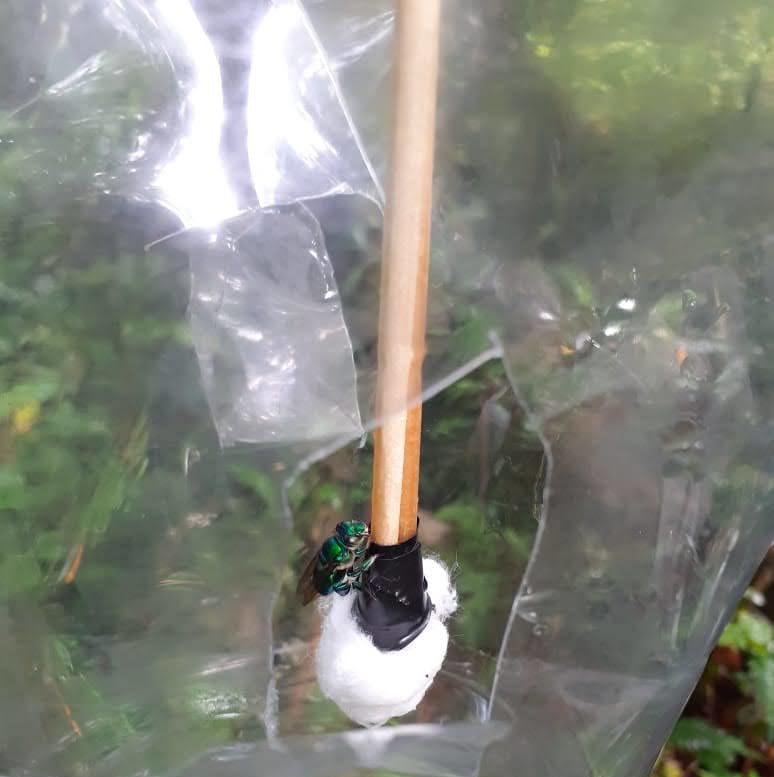Matheus Yuri Halmenschlager
Our research aims to understand the role of cacao agroforest systems in maintaining diversity patterns of orchid bee communities, and consequently, in the provision of a key ecosystem service ─ pollination. Specifically, we will assess if local vegetation structure and/or landscape features are important predictors of orchid bee diversity when compared to forest fragments and identify which specific characteristics of cabrucas and forest patches can favour the maintenance of richest bee communities.

Trap.
The study will be conducted in 18 forest fragments and 18 cacao agroforest systems located in the southern Bahia state in Brazil, carefully selected on the basis of local structure (shade management) and landscape context (amount of surrounding forest cover). This region is inserted in the Brazilian Atlantic Forest, that harbours a high number of endemic and threatened species. Yet the biome has been severely reduced and degraded due to a combination of anthropogenic disturbances, including deforestation, fragmentation, logging and hunting ─ indeed, almost 90% of native forest has been lost, with the remaining vegetation reduced to forest fragments embedded within human-modified landscapes. Specifically, southern Bahia has experienced even higher rates of forest loss. In addition to forest fragments, the region harbours vast lands of cacao agroforests (cabrucas), where cacao is cultivated under the shade of native forest trees. This biodiversity- friendly system actually harbours an impressive proportion of the native biota, yet this information for orchid bees is still scarce. Considering the recent state legislation, which started to allow a massive removal of shade trees to boost cacao production, putting at risk the native species involved in this agroforest system, our study will effectively contribute to understanding the role of intensive management of cabrucas in biodiversity maintenance.
The field activities will be conducted in 36 sites, between January and May 2020. In this period, we will perform bee surveys during three consecutive days in each sampling site. We will concomitantly collect data on local structure, considering all 36 sites. These sites were selected by a mapping of the study area, considering different amounts of forest cover in a 1 km radius.
For the bee survey, we will use a model of scent bait trap composed of four different substances (cineole, eugenol, vanillin, and methyl cinnamate) disposed in a line of plastic bottles, separated by 2 m among each other, and placed at 1,5 m from the ground. We will establish the line traps from a 100 m of the nearest border, to avoid edge effects.
For the local structure analyses, we will establish a 10x10 meters plot within each sampling site to obtain three local vegetation structure variables, including: the percentage of canopy opening, number of understory plants, and the number of trees with diameter at breast height (DBH) ≥ 10 cm.